Feel the Pulse of History as You Explore the Gates and Turrets That Have Stood for Over 400 Years
In the southern section of Nagoya Castle’s Honmaru (main compound), visitors can discover a series of historically rich landmarks that survived war and time: the Omote Ni-no-mon Gate, the Southeast Turret, the Southwest Turret, and the Ruins of the Ichi-no-mon Gate. This article will guide you through their architectural details and highlights, offering insight into their unique roles in the castle’s defenses and heritage.
Omote Ni-no-mon Gate
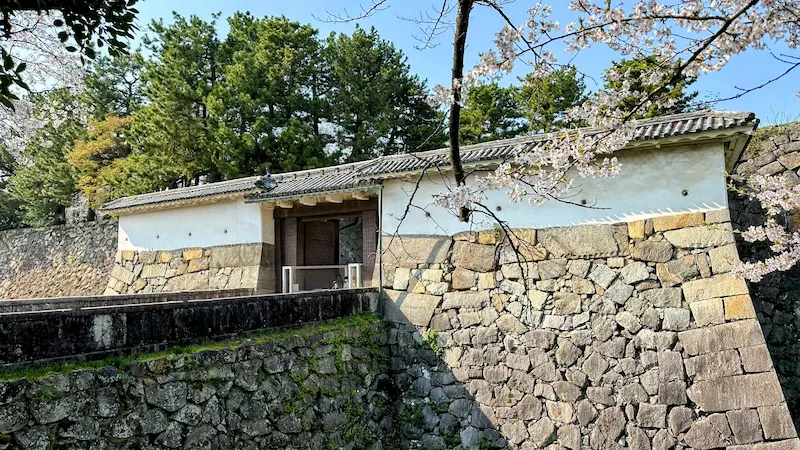
🏛 Overview
Located on the southern side of the Honmaru, the Omote Ni-no-mon Gate was constructed in 1612 (Keichō 17) and is designed in the Kōraimon style. Built from thick timber reinforced with iron plates, this gate served both as a defensive and ceremonial entrance to the castle. The flanking earthen walls feature teppō-zama (gun ports), designed to repel attackers.
Miraculously spared from destruction during World War II, this gate still retains its original pillars and lintels and is designated as a National Important Cultural Property.
🗺 Address:
1-1 Honmaru, Naka-ku, Nagoya, Aichi Prefecture, South of Honmaru
🚶 Access:
Approx. 1-minute walk (110m) from the Statue of Katō Kiyomasa
⏳ Recommended Visit Duration:
- Quick Visit: ~5 minutes
- In-depth Visit: ~15 minutes
📍 Highlights:
- Omote Ni-no-mon Gate: A rare surviving example of early Edo-period castle gate design.
- Southeast Turret: Located nearby, this three-story turret is also a designated Important Cultural Property.
- Seasonal Views: Cherry blossoms in spring and fiery leaves in autumn create a striking contrast with the historic architecture.
📌 Trivia:
- Historical Significance: This gate was a key entry point into the Honmaru and contributed significantly to the castle’s defensive layout.
- Defensive Feature: The flanking walls’ gun ports reflect sophisticated military design meant to thwart close-range attacks.
- Famous Connection: Constructed as part of Tokugawa Ieyasu’s castle-building campaign.
Southeast Turret (Tōnan-sumi Yagura)
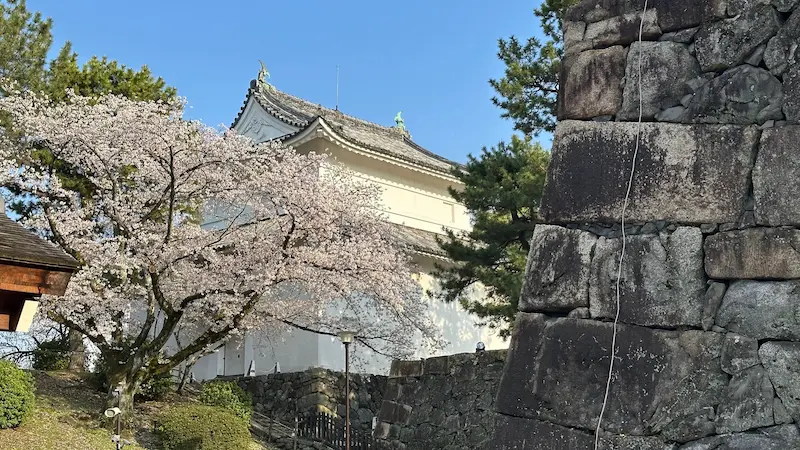
🏛 Overview
The Southeast Turret, located at the southeastern corner of the Honmaru, is one of the few original turrets still standing at Nagoya Castle. Built around 1612, it is structured with two external tiers but houses three interior floors, a clever design that once earned it the name Tatsumi Turret.
The turret features the Aoi crest, symbol of the Tokugawa clan, prominently displayed on its ornamental tiles. Unlike many structures that perished in wartime bombings, this turret survived World War II and retains its original form.
🗺 Address:
1-1 Honmaru, Naka-ku, Nagoya, Aichi Prefecture, Southeast Corner of Honmaru
🚶 Access:
Approx. 1-minute walk (45m) from Omote Ni-no-mon Gate
⏳ Recommended Visit Duration:
- Quick Visit: ~5 minutes
- In-depth Visit: ~15 minutes
📍 Highlights:
- Unique Structure: Two-story exterior, three-story interior, with stone drop chutes for defense.
- Aoi Crest Tiles: Decorative tiles display the Tokugawa family crest.
- Seasonal Views: Spring and autumn provide a picturesque backdrop for photography and reflection.
📌 Trivia:
- Historical Detail: Once known as Tatsumi Turret, it is one of the few remaining original structures from the Edo period.
- Hidden Feature: The east-facing roof on the third floor features an arched karahafu gable, indicating the building’s high status.
- Famous Connection: Commissioned under Tokugawa Ieyasu’s direction as part of the castle’s original defensive network.
Ichi-no-mon Gate Ruins
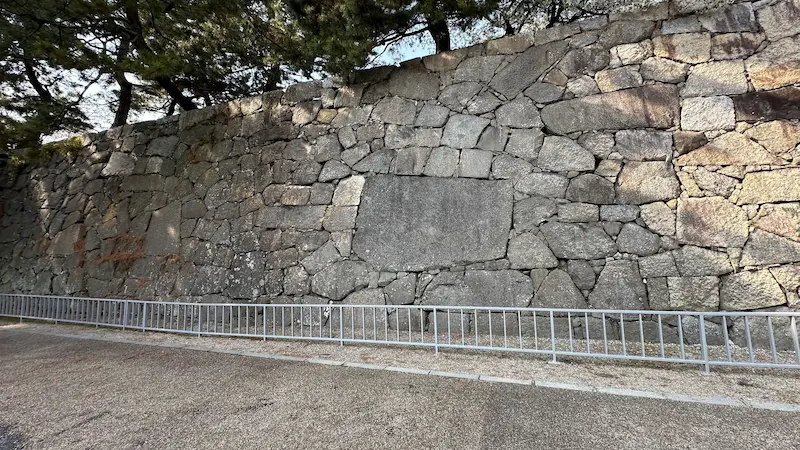
🏛 Overview
The Ichi-no-mon Gate Ruins mark the site of what was once one of the main entrances to the Honmaru. Together with the Omote Ni-no-mon Gate, it formed a masugata—a square defensive courtyard that funneled and exposed invading forces.
The gate featured a two-story irimoya-style roof and a stone drop mechanism above the doors. Sadly, it was destroyed during air raids in 1945, leaving only the original stone foundations visible today.
🗺 Address:
1-1 Honmaru, Naka-ku, Nagoya, Aichi Prefecture, Site of Ichi-no-mon Gate
🚶 Access:
Approx. 1-minute walk (10m) from Southeast Turret
⏳ Recommended Visit Duration:
- Quick Visit: ~3 minutes
- In-depth Visit: ~15 minutes
📍 Highlights:
- Stone Foundations: The remaining stone base reveals the scale and defensive layout of the former masugata gate.
- Historical Signage: Informational boards explain the structure and significance of the former gate.
- Seasonal Views: The contrast of cherry blossoms against the historic stone is especially stunning in spring.
📌 Trivia:
- Historical Significance: Served as a primary gate in tandem with Omote Ni-no-mon, forming an essential part of the castle’s defenses.
- Hidden Feature: The scale of the remaining stonework allows visitors to visualize the gate’s original grandeur.
- Famous Connection: Built during Tokugawa Ieyasu’s rule as part of the castle’s primary security network.
Southwest Turret (Seinan-sumi Yagura)
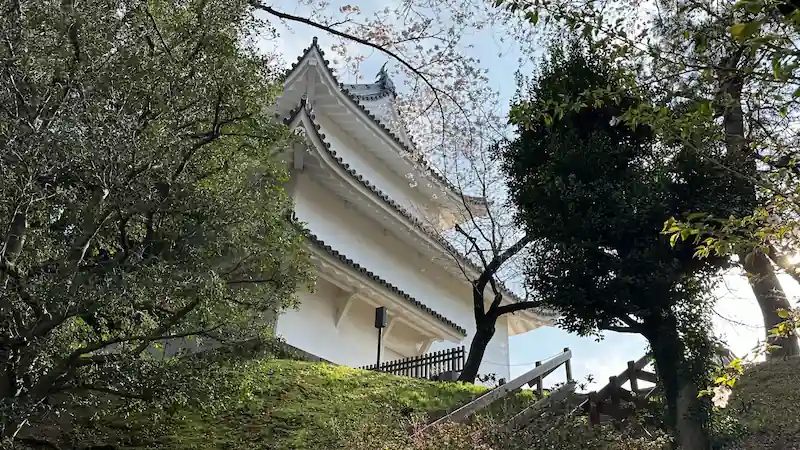
🏛 Overview
The Southwest Turret, or Honmaru Hitsuji-saru Turret, sits on the southwest corner of the Honmaru. Built around 1612, this structure features an unusual format: while it appears to be two stories from the outside, it is actually three stories inside—its first floor lacks an external roof, creating a deceptive exterior.
The turret measures approximately 11.8 meters east-west, 13.5 meters north-south, and stands about 14.1 meters high. It features an irimoya-style tiled roof combining flat and round tiles. The second-floor west and south walls include chidorihafu gables and stone drop defenses.
Originally destroyed by a stone wall collapse in 1921, the turret was rebuilt in 1923 by the Imperial Household Ministry using ornamental tiles bearing the imperial chrysanthemum crest.
🗺 Address:
1-1 Honmaru, Naka-ku, Nagoya, Aichi Prefecture
🚶 Access:
Approx. 3-minute walk (100m) from the Ichi-no-mon Ruins
⏳ Recommended Visit Duration:
- Quick Visit: ~5 minutes
- In-depth Visit: ~15 minutes
📍 Highlights:
- Unique Structure: Appears two-storied but is three floors inside—an architectural rarity.
- Imperial Decorations: Rebuilt with roof tiles featuring the chrysanthemum crest, a symbol of the imperial family.
- Seasonal Views: A beautiful location for viewing spring blossoms and fall foliage.
📌 Trivia:
- Noteworthy History: After the 1921 collapse, the turret was rebuilt using imperial crests—marking a rare imperial restoration.
- Hidden Feature: Though usually closed to the public, the interior is occasionally open during special exhibitions.
- Famous Connection: Originally part of Tokugawa Ieyasu’s design, this turret contributed to the southwestern defenses of the castle.
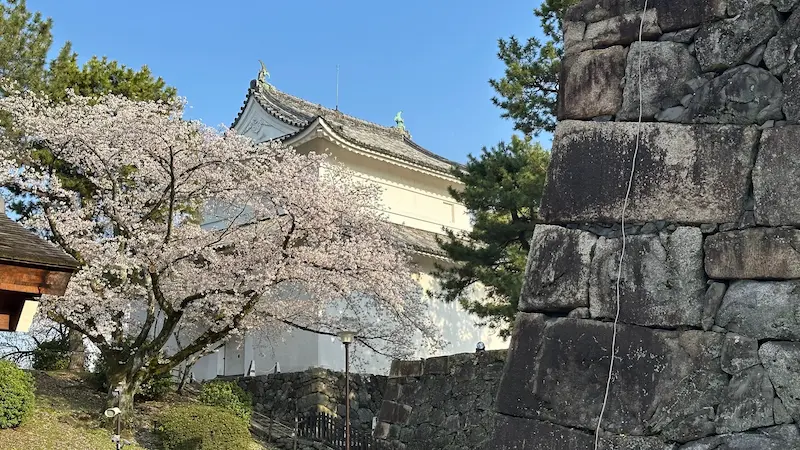



comment